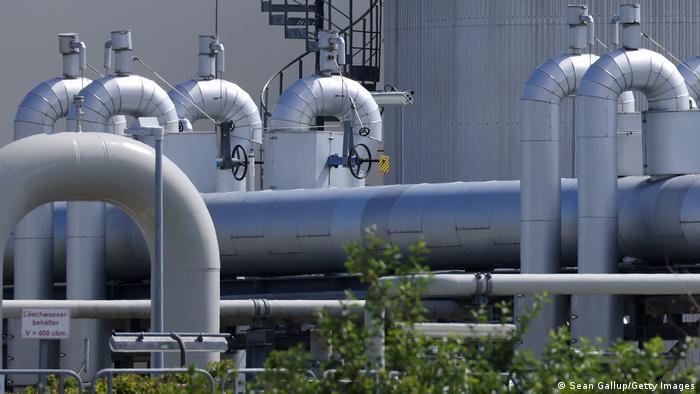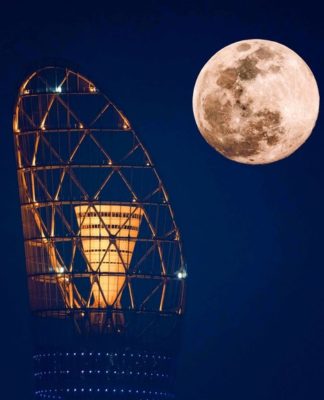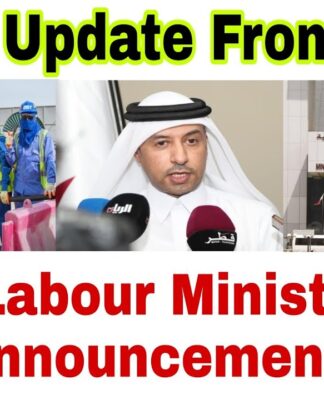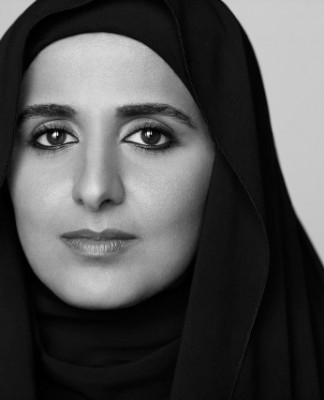NEWS
Russia-Ukraine updates: Gazprom to shut Nord Stream 1 pipeline for three days
The Nord Stream 1 pipeline, which supplies Russian gas to Europe, will shut down for three days, Gazprom said. Ukraine’s nuclear company believes Russia will carry out a “provocation” at the Zaporizhzhia plant.
The receiving station for the Nord Stream 1 natural gas pipeline
Gas flows will resume after maintenance, Gazprom has said
The Nord Stream 1 pipeline, which supplies gas from Russia to Europe under the Baltic Sea, will be shut down from August 31 to September 2 for maintenance, Gazprom said on Friday.
“It is necessary to carry out maintenance every 1,000 hours” of operation, the Russian majority state-owned energy company said in a statement.
“On August 31, 2022, the only Trent 60 gas compression unit will be stopped for three days for maintenance” involving technicians from Germany’s Siemens, Gazprom said.
Following the maintenance, flows of 33 million cubic meters a day will resume, it added. This corresponds to 20% of the pipeline’s daily maximum output, as Nord Stream 1’s full capacity is 167 million cubic meters per day.
Due to previous allegedly necessary repairs, Gazprom had drastically reduced gas deliveries to Germany because of an absent turbine. German officials have repeatedly said the move was an attempt by Russia to punish Germany for its stance on the war in Ukraine and for imposing sanctions on Russia.
Since the Russian invasion of Ukraine began in February, Berlin has rushed to wean itself off Russian gas. Across Germany, gas storage levels are at 78%, according to data from European gas storage operators. However, Germany’s dependence on Russian gas has raised serious concerns about energy shortages during the cold winter months.
Earlier on Friday, Wolfgang Kubicki, deputy leader of the Free Democrats (FDP), a junior coalition partner in Chancellor Olaf Scholz’s government, suggested that opening Russia’s blocked Nord Stream 2 gas pipeline could be the answer to a looming energy emergency in the winter. However, his statements met with widespread criticism, including from his own FDP.
After Gazprom’s announcement, European gas prices soared to a new record high at the close of trading on Friday. The Dutch TTF Gas Futures contract jumped to a closing high of €257.40 ($258.30) amid fears of winter energy shortages.
Play Video1:23 min
Energy crisis: Germany prepares for worst-case scenario
Here’s a roundup of some of the other key developments in Ukraine on August 19.
S&P upgrades Ukraine rating from selective default
S&P joined Fitch in upgrading Ukraine’s credit rating on Friday after the war-torn nation last week secured a two-year reprieve on its foreign debt from creditors.
Boosting the country’s credit score of foreign debt to CCC+ “reflects strong committed international financial support to Ukraine, coupled with eroding, albeit still relatively high, foreign exchange reserves,” S&P Global Ratings said in a statement.
Ratings agency Fitch raised Ukraine’s credit score on Thursday.
However, even with the upgrade, S&P warned that “given the ongoing conflict with Russia, Ukraine’s ability to stay current on its debt is highly dependent on factors largely outside of government control.”
The agency projects the country’s economy will contract by 40% this year.
Ukrainian fundraising campaign led to better satellite images for armed forces
The Ukrainian military is getting fast access to highly accurate satellite images in its war with Russia, thanks to a fundraising campaign.
According to a contract with the Finnish provider ICEYE, the Ukrainian government is allowed to use a radar satellite around the clock, which also provides images at night or when the skies are cloudy.
The money comes from a fundraising campaign in Ukraine launched by TV presenter Serhiy Prytula. Media reports say about 600 million hryvnias ($16.2 million) have been raised, which were actually intended to buy Turkish Bayraktar combat drones.
When the manufacturer donated the drones instead, use of the satellite was purchased with the funds. Combining the reconnaissance images with modern weapons will open up new possibilities for Ukraine’s armed forces, Ukrainian Defense Minister Oleksii Resnikov wrote on Facebook on Friday.
“Let’s assume that soon any HIMARS, M270 or MARS II, as well as any weapon or self-propelled gun with high-precision projectiles will be able to destroy the enemy more effectively,” he said. The weapon systems he mentioned are long-range multiple rocket launchers.
Zelenskyy urges Europe to prepare for life without Russian energy
In his nightly video address, Ukrainian President Volodymyr Zelenskyy commented on Gazprom’s announcement that the Nord Stream 1 pipeline, which supplies Russian gas to Europe, will be shut down for three days at the end of the month.
According to the Ukrainian president, pipelines like Nord Stream 1 and 2 are used by Russia “exclusively to supply problems to Europe, not to help someone there with gas.”
“The longer the terrorist state [Russia] remains on the European and world energy market, the longer it will not be stable,” Zelenskyy said.
He also called on European countries to “prepare their energy systems to exist without any supply of energy carriers from Russia.”
Zelenskyy also thanked all those working out the specific details of the IAEA mission to be sent to the Zaporizhzhia nuclear power plant.
The Ukrainian president warned that “if Russian blackmail with radiation continues, this summer may go down in the history of various European countries as one of the most tragic of all time.”
US announces new $775 million arms package for Ukraine
The US Defense Department announced on Friday a new $775 million (€772 million) package of defense equipment and ammunition for Ukraine, including HIMARS missiles, artillery, surveillance drones and mine-clearing systems.
“We want to make sure that Ukraine has a steady stream of ammunition to meet its needs, and that’s what we’re doing with this package,” a senior US defense official told reporters.
The package would include 16 Howitzer systems, 15 Scan Eagle surveillance drones, 40 MaxxPro MRAP (mine resistant ambush protected vehicles) and about 1,000 Javelin anti-tank missiles.
This would bring the total U.S. military aid sent to Ukraine since the February 24 invasion by Russia to $10.6 billion (€10.56 billion).
Russia ‘planning to disconnect Zaporizhzhia nuclear plant’
Ukraine’s Energoatom state nuclear company said on Friday that Russian forces in control of the Zaporizhzhia nuclear power plant are planning to switch off its functioning power blocks and disconnect them from the Ukrainian power grid.
In a statement, Energoatom said it believed Russia was preparing to conduct a “large-scale provocation” at the site in southern Ukraine. Moscow, in its turn, accused Kyiv of preparing a “provocation” at the site on Thursday.
“There is information that the Russian occupation forces are planning to shut down the power blocks and disconnect them from the power supply lines to the Ukrainian power system in the near future,” the statement said.
“The Russian military is currently looking for fuel suppliers for the diesel generators, which are supposed to turn on after the power units are shut down in the absence of an external power supply for the nuclear fuel cooling systems,” it said.
Russian forces seized the nuclear plant, Europe’s largest, in March. Despite its capture, it is still staffed by Ukrainian technicians, though only two of its six reactors are working at full capacity.
The nuclear plant has become the focus of international attention with both sides accusing each other of shelling the site, potentially risking a major catastrophe.
Play Video4:58 min
‘Very tense’ situation at Zaporizhzhia nuclear plant: DW’s Mathias Bölinger
On Friday, Nikolai Patrushev, the secretary of Russia’s Security Council, accused the United States of encouraging Ukrainian attacks on the plant.
“In case of a technological disaster, its consequences will be felt in every corner of the world,” Patrushev said. “Washington, London and their accomplices will bear full responsibility for that.”
Ukraine, in its turn, has accused Russia of storing troops and weapons at the Zaporizhzhia plant and using it as a base for launching strikes against Ukrainian-controlled territory. Ukrainian officials and military analysts say Moscow’s forces are using the plant as a shield, as Ukrainian forces will be reluctant to fire back at such a site.
Russia has denied the accusations.
Russia’s watchdog imposes measures against TikTok, Telegram, Zoom, Discord, Pinterest
Russia’s state communications regulator, Roskomnadzor, said on Friday it was taking punitive measures against five foreign IT companies for violating online content laws. The move could require search engines to include a disclaimer about the violations.
The regulator said it was imposing measures against ByteDance’s TikTok, Telegram messaging service, Zoom Video Communications, chat tool Discord and Pinterest.
In a statement, Roskomnadzor said the measures were in response to the companies’ failure to remove content that it had flagged as illegal and would remain in place until they complied.
Russia has repeatedly threatened to fine sites — including Google — that violate harsh new laws that criminalize spreading what officials perceive as “false information” about the Russian army.
Ukrainian Economy Ministry forecasts a 35%-40% drop in GDP
Ukraine’s gross domestic product may fall by 35% to 40% in 2022, Ukrainian Minister of Economy Yuliia Svyrydenko said on national television on Friday.
“We all understand that we are at war, and according to our calculations, according to the macro-forecasts of the Ministry of Economy, the economy could decline by 35% to 40% by the end of the year,” she said.
Svyrydenko stressed the importance of maintaining economic stability and stimulating the economic efficiency of the state.
The World Bank predicts a drop in Ukraine’s GDP by 45.1% in 2022.
Putin warns Macron of ‘catastrophe’ at Ukraine nuclear plant
Russian President Vladimir Putin told his French counterpart, Emmanuel Macron, of the risk of a “catastrophe” after days of shelling at the Zaporizhzhia, Russian news agencies have reported.
According to a Kremlin read out of a phone call with the French president, the agencies said Putin had “stressed that the systematic shelling by the Ukrainian military … creates the danger of a large-scale catastrophe.”
Both leaders agreed on the need to send a team from the International Atomic Energy Agency (IAEA) to the plant “as soon as possible,” the Kremlin added.
Macron also told his Russian counterpart that he is concerned about safety risks at the Zaporizhzhia nuclear plant, the Elysee said.
According to a readout sent to journalists by Macron’s office, Putin had agreed to send a mission of experts from the International Atomic Energy Agency (IAEA) to the site. The Russian president reportedly said that he was open to reconsider previous demand that IAEA reaches nuclear plant via Russian soil, and Macron asked for mission to travel through Ukraine.
The two presidents agreed to continue their talks in the coming days, the Elysee said.
According to the reports, Putin also told Macron that there were still obstacles to supplying Russian food and fertilizer products to world markets.
Moscow has blamed Western sanctions for delays to its exports, while Western leaders have accused Russia of using food as a weapon.
UN’s Guterres visits Odesa
UN Secretary-General Antonio Guterres has paid a visit to the Black Sea port of Odesa after talks on Thursday with Ukrainian President Volodymyr Zelenskyy and Turkish President Recep Tayyip Erdogan. The UN chief said the export of Ukrainian foodstuffs did not mean the end of a food security crisis.
Odesa, one of Ukraine’s main ports, is one of three ports designated for grain shipments under a landmark grain export deal with Russia brokered partly with Turkey.
Guterres said much must still be done if the whole world were to have access to Ukrainian foodstuffs and Russian food and fertilizer even with the deal in place.
“This is an agreement between two parties locked in bitter conflict. It is unprecedented in scope and scale. But there is still a long way to go on many fronts,” he said.
“It is time for massive and generous support so developing countries can purchase the food from this and other ports — and people can buy it,” he said.
On Thursday, at a joint press conference with the two other leaders, Guterres said the United Nations aimed to “scale-up” operations under the deal ahead of winter.
The deal has so far resulted in 25 vessels carrying some 600,000 tons of agricultural products leaving Ukraine, one of the world’s biggest wheat exporters.
After his trip to Odesa, Guterres is expected to head to Turkey to visit the Joint Coordination Centre, the body tasked with overseeing the deal.
Glory bulk carrier seen off Odesa
Several ships, such as the Glory bulk carrier seen here, have left Odesa with grain shipments
Evacuations in Russia following munitions depot fire
Residents of two villages in Russia’s Belgorod region, near Ukraine’s northeastern border, were taken to safety after a fire at a munitions depot near the village of Timonovo, the region’s governor said on Friday.
There were no casualties in the blaze, which broke out late on Thursday, Vyacheslav Gladkov said.
The fire came just days after another ammunition depot exploded on Ukraine’s Black Sea peninsula of Crimea, which has been under Russian occupation since it was seized by Moscow in 2014.
In another recent incident on the peninsula, nine Russian warplanes were reported destroyed at an air base.
Although Ukrainian authorities have not publicly said that the disasters were caused by attacks by Ukrainian forces, President Volodymyr Zelenskyy has tried to insinuate the possibility of Ukrainian attacks behind enemy lines.
Russia has blamed the Crimean blasts on “sabotage” by Kyiv.
Russia has lost almost 45,000 troops: report
Russia has lost 44,700 troops in Ukraine as well as 1,899 tanks, 4,195 armored fighting vehicles, 1,016 artillery systems, 266 multiple launch rocket systems, 141 air defense systems, 197 helicopters, 234 airplanes, 795 drones and 15 boats, according to figures from Ukraine’s General Staff reported by The Kyiv Independent newspaper.
The Kyiv Independent is an English-language Ukrainian newspaper founded in 2021 by journalists who left the Kyiv Post, another English-language media outlet in Ukraine’s capital, amid disputes over editorial independence.
The figures cannot be independently verified, and most international assessments put the troop losses lower. On July 27, US government officials told Congress that roughly 75,000 Russians had been killed or wounded.
Russia itself has not issued recent statistics on its losses of personnel and equipment. The last time was on March 25, when it gave a total of 1,351 killed and 3,825 wounded.
More on the war in Ukraine
Russia is facing a set of severe Western sanctions over its invasion of Ukraine. But it has been employing a number of strategies in a bid to protect its consumers from their effects, as DW reports.
The situation at the Zaporizhzhia nuclear power plant has set alarm bells ringing across Europe amid fears of a nuclear disaster like the one at Chornobyl in 1986. DW investigates how international law seeks to protect from such risks.
tj/msh (Reuters, AFP, AP, dpa)


























